Behrouz Rostami
Department of Electrical Engineering, University of Wisconsin-Milwaukee, Milwaukee, WI, USA
Multi-modal Wound Classification using Wound Image and Location by Deep Neural Network
Sep 14, 2021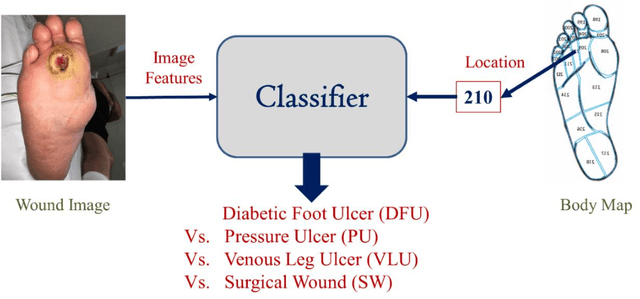

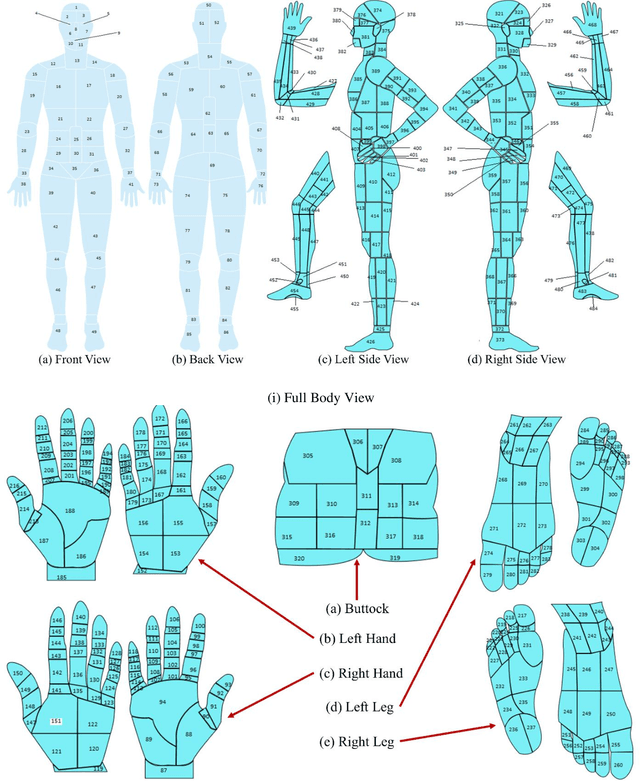
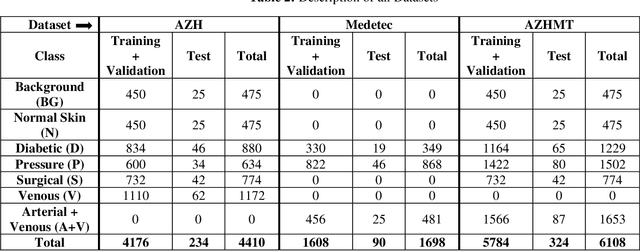
Abstract:Wound classification is an essential step of wound diagnosis. An efficient classifier can assist wound specialists in classifying wound types with less financial and time costs and help them decide an optimal treatment procedure. This study developed a deep neural network-based multi-modal classifier using wound images and their corresponding locations to categorize wound images into multiple classes, including diabetic, pressure, surgical, and venous ulcers. A body map is also developed to prepare the location data, which can help wound specialists tag wound locations more efficiently. Three datasets containing images and their corresponding location information are designed with the help of wound specialists. The multi-modal network is developed by concatenating the image-based and location-based classifier's outputs with some other modifications. The maximum accuracy on mixed-class classifications (containing background and normal skin) varies from 77.33% to 100% on different experiments. The maximum accuracy on wound-class classifications (containing only diabetic, pressure, surgical, and venous) varies from 72.95% to 98.08% on different experiments. The proposed multi-modal network also shows a significant improvement in results from the previous works of literature.
Multiclass Burn Wound Image Classification Using Deep Convolutional Neural Networks
Mar 01, 2021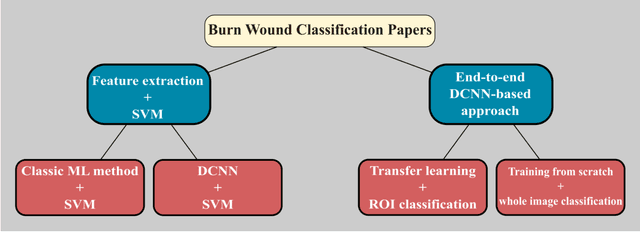
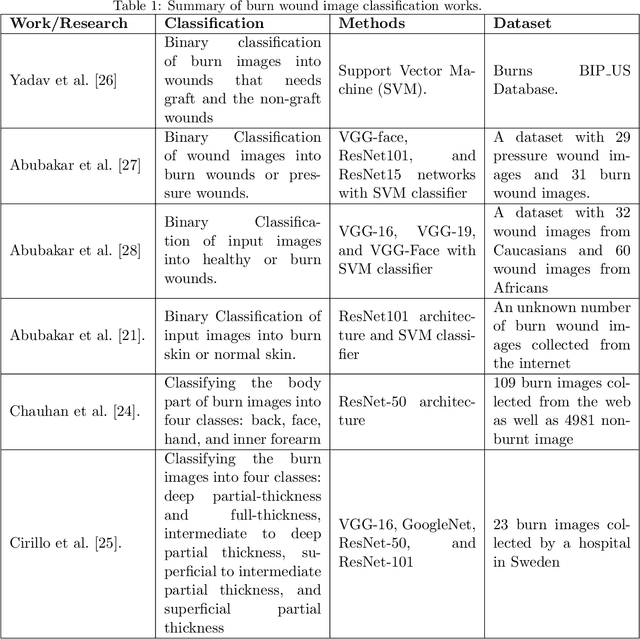
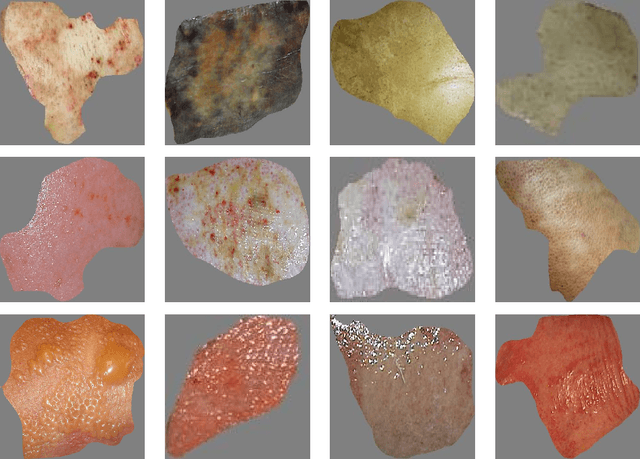
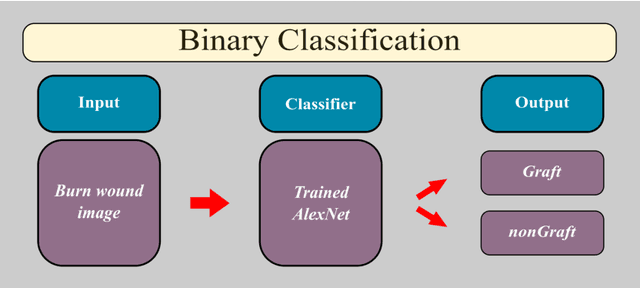
Abstract:Millions of people are affected by acute and chronic wounds yearly across the world. Continuous wound monitoring is important for wound specialists to allow more accurate diagnosis and optimization of management protocols. Machine Learning-based classification approaches provide optimal care strategies resulting in more reliable outcomes, cost savings, healing time reduction, and improved patient satisfaction. In this study, we use a deep learning-based method to classify burn wound images into two or three different categories based on the wound conditions. A pre-trained deep convolutional neural network, AlexNet, is fine-tuned using a burn wound image dataset and utilized as the classifier. The classifier's performance is evaluated using classification metrics such as accuracy, precision, and recall as well as confusion matrix. A comparison with previous works that used the same dataset showed that our designed classifier improved the classification accuracy by more than 8%.
Multiclass Wound Image Classification using an Ensemble Deep CNN-based Classifier
Oct 19, 2020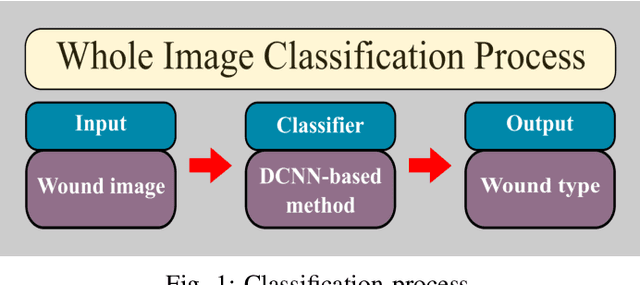
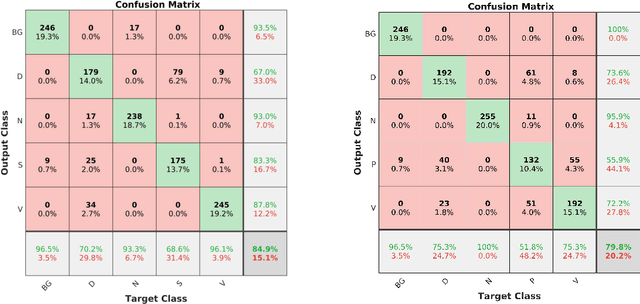
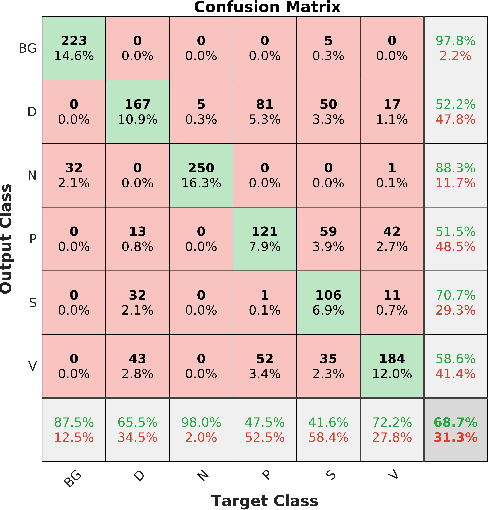
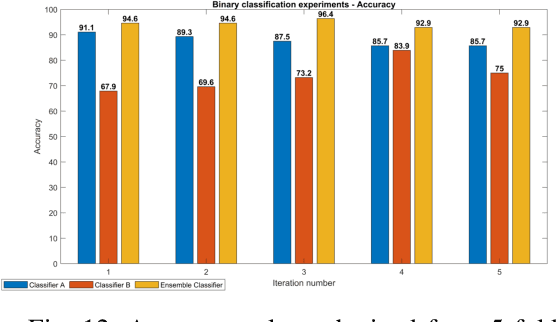
Abstract:Acute and chronic wounds are a challenge to healthcare systems around the world and affect many people's lives annually. Wound classification is a key step in wound diagnosis that would help clinicians to identify an optimal treatment procedure. Hence, having a high-performance classifier assists the specialists in the field to classify the wounds with less financial and time costs. Different machine learning and deep learning-based wound classification methods have been proposed in the literature. In this study, we have developed an ensemble Deep Convolutional Neural Network-based classifier to classify wound images including surgical, diabetic, and venous ulcers, into multi-classes. The output classification scores of two classifiers (patch-wise and image-wise) are fed into a Multi-Layer Perceptron to provide a superior classification performance. A 5-fold cross-validation approach is used to evaluate the proposed method. We obtained maximum and average classification accuracy values of 96.4% and 94.28% for binary and 91.9\% and 87.7\% for 3-class classification problems. The results show that our proposed method can be used effectively as a decision support system in classification of wound images or other related clinical applications.
Fully Automatic Wound Segmentation with Deep Convolutional Neural Networks
Oct 12, 2020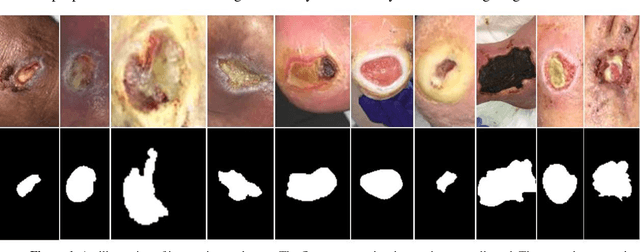

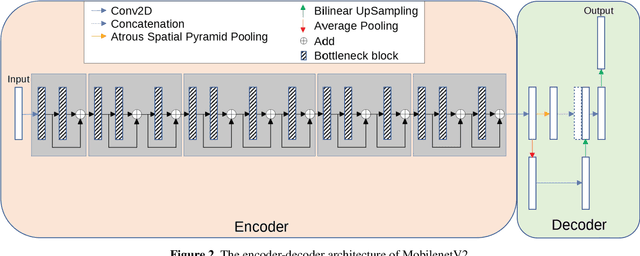

Abstract:Acute and chronic wounds have varying etiologies and are an economic burden to healthcare systems around the world. The advanced wound care market is expected to exceed $22 billion by 2024. Wound care professionals rely heavily on images and image documentation for proper diagnosis and treatment. Unfortunately lack of expertise can lead to improper diagnosis of wound etiology and inaccurate wound management and documentation. Fully automatic segmentation of wound areas in natural images is an important part of the diagnosis and care protocol since it is crucial to measure the area of the wound and provide quantitative parameters in the treatment. Various deep learning models have gained success in image analysis including semantic segmentation. Particularly, MobileNetV2 stands out among others due to its lightweight architecture and uncompromised performance. This manuscript proposes a novel convolutional framework based on MobileNetV2 and connected component labelling to segment wound regions from natural images. We build an annotated wound image dataset consisting of 1,109 foot ulcer images from 889 patients to train and test the deep learning models. We demonstrate the effectiveness and mobility of our method by conducting comprehensive experiments and analyses on various segmentation neural networks.
Image Based Artificial Intelligence in Wound Assessment: A Systematic Review
Sep 15, 2020



Abstract:Efficient and effective assessment of acute and chronic wounds can help wound care teams in clinical practice to greatly improve wound diagnosis, optimize treatment plans, ease the workload and achieve health related quality of life to the patient population. While artificial intelligence (AI) has found wide applications in health-related sciences and technology, AI-based systems remain to be developed clinically and computationally for high-quality wound care. To this end, we have carried out a systematic review of intelligent image-based data analysis and system developments for wound assessment. Specifically, we provide an extensive review of research methods on wound measurement (segmentation) and wound diagnosis (classification). We also reviewed recent work on wound assessment systems (including hardware, software, and mobile apps). More than 250 articles were retrieved from various publication databases and online resources, and 115 of them were carefully selected to cover the breadth and depth of most recent and relevant work to convey the current review to its fulfillment.
 Add to Chrome
Add to Chrome Add to Firefox
Add to Firefox Add to Edge
Add to Edge